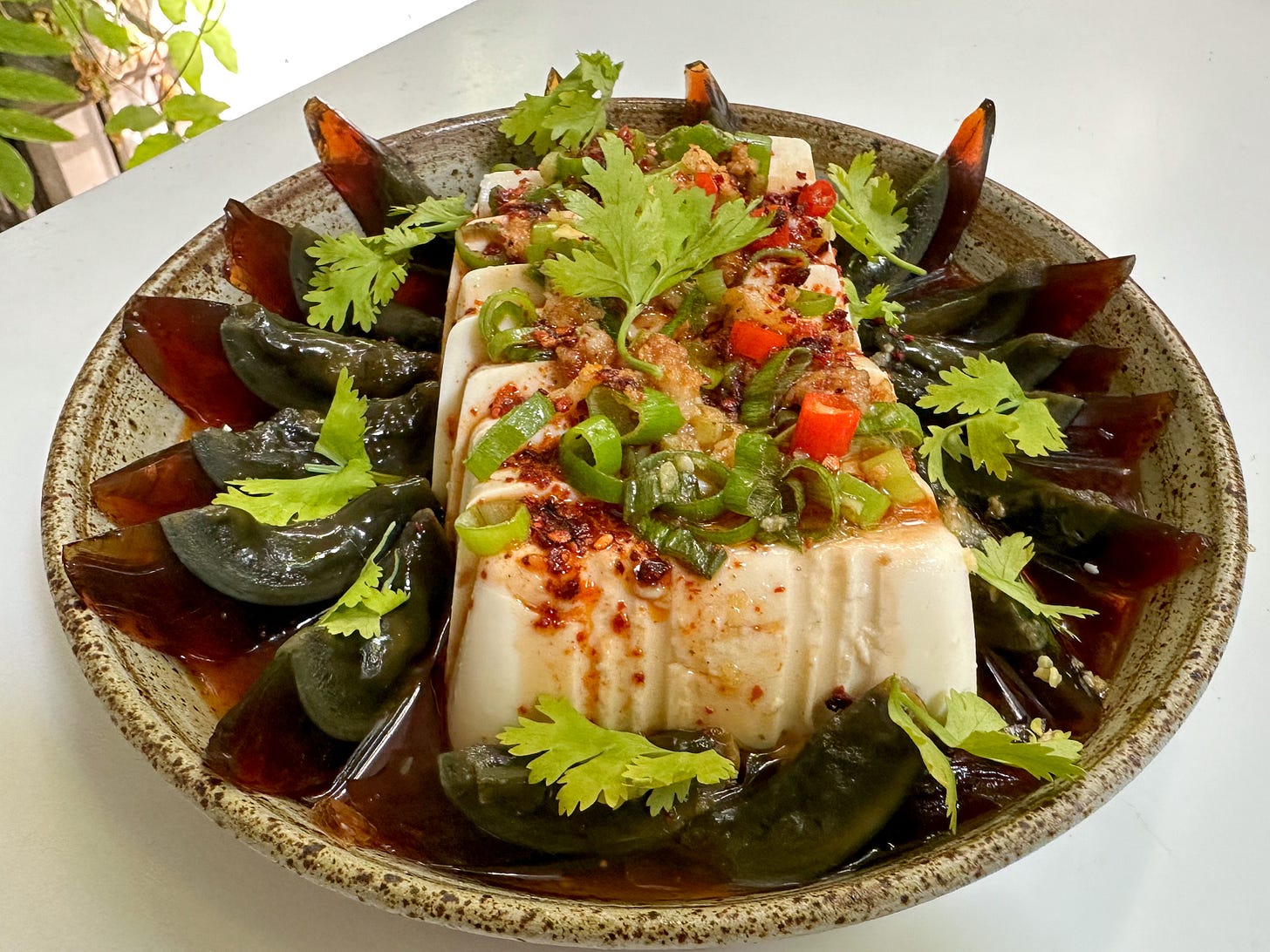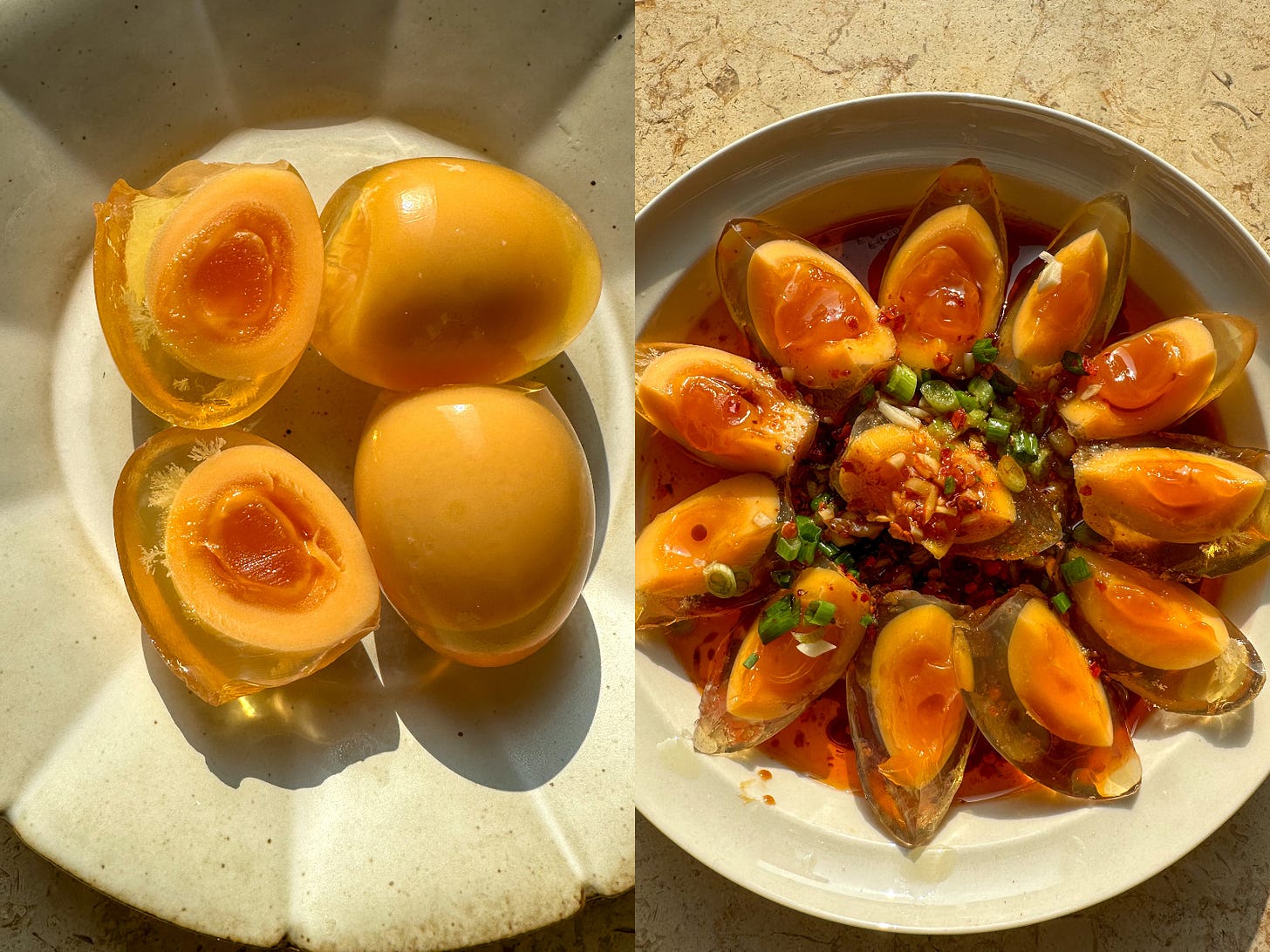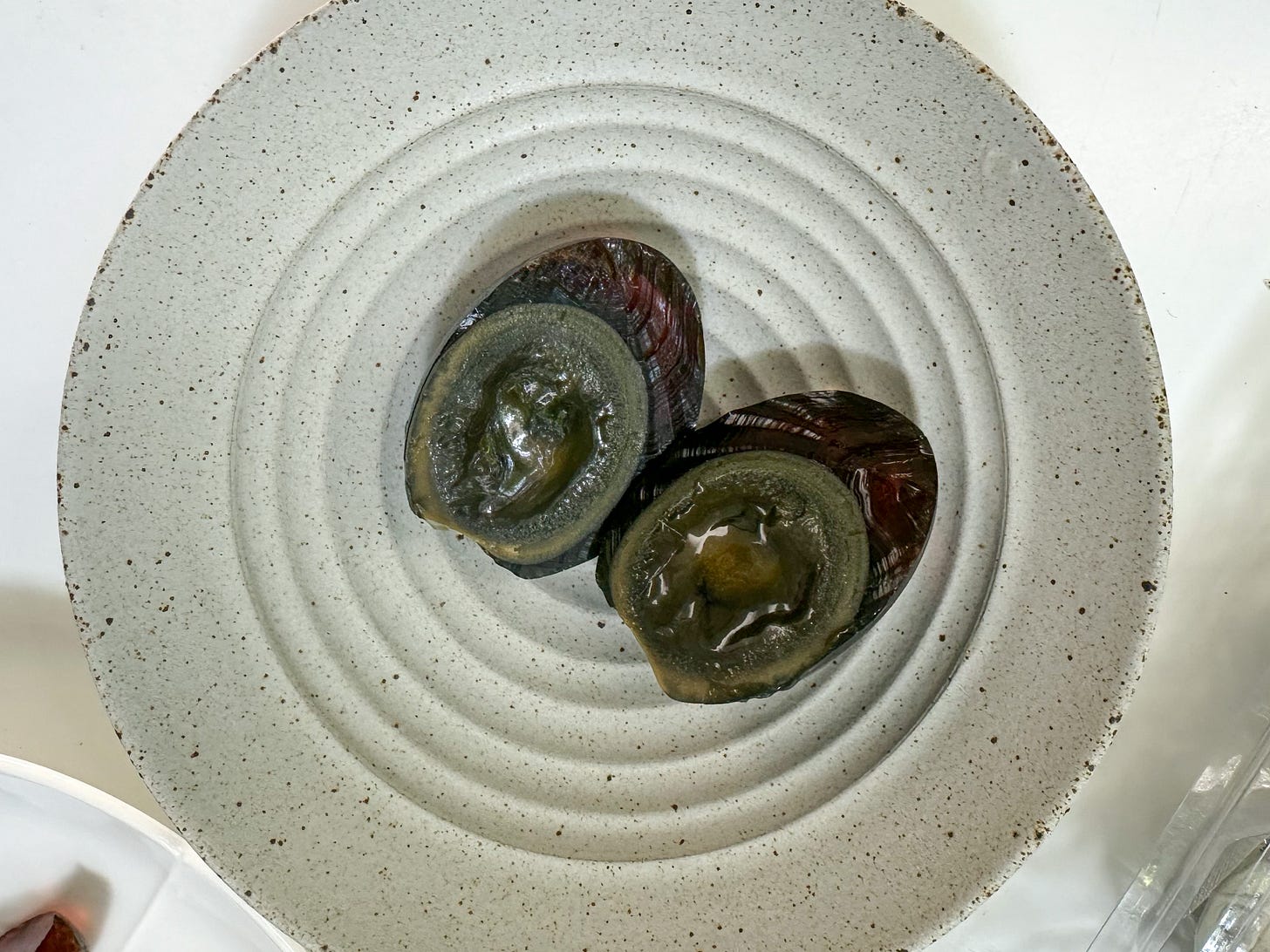Hi! How are you transitioning into the new season? This tofu recipe has been sitting in my archive for a few weeks now. Back then, summer still felt endless. And just in a blink, Berlin goes full autumn (or actually more winter). But a speedy lunch or an easy side dish to your Chinese cooking night can still be something we cook up in the coming months.
Last week, I read an article about the "new age" of recipe naming, where Sohla El-Waylly discusses how “Making a great recipe is just one small part of it. Selling it is the bigger part.” It got me thinking: how do I sell you on this tofu and century egg dish? Is it because it’s quick, protein-packed, and low-effort? Or is it the century egg that might need some convincing?
I’ve always loved century eggs, but I also overthink when sharing a recipe. I once worked on a congee recipe with century egg and pork, but it never styled quite right. Then, during my last trip home, I sourced some gorgeous golden-hued, artisanal century eggs and shot a salad recipe. I never posted it, though. Too much overthinking. Back in Berlin, I’m stuck with the more traditional dark brown-grey variety. (They’re still great, but, let’s face it, we’re visual creatures, and those golden ones were stunning.)
This insecurity reminds me of a great piece of food writing by Jiayang Fan on the Disgusting Food Museum. She described how seeing Chinese staples like century eggs made her feel like “a tourist and like one of the exhibits.” As immigrants, many of us have had the experience of learning to love foods we once found strange—cheese, olives, for example—while feeling like outsiders for loving what others find odd. She writes, “Assimilation requires you to adopt a foreign tongue, in more ways than one. But when the choice is between annihilation and assimilation, you assimilate.”
So What Are Century Eggs?
Century eggs, or pi dan (皮蛋), are duck eggs (sometimes chicken or quail) preserved in a mixture of clay, ash, quicklime, and rice hulls. Some producers add spices or tea leaves. Over several weeks or months, the egg whites turn into a jelly-like consistency, while the yolk becomes creamy and rich. Century eggs come in different varieties, from the classic dark brown to golden or even eggs patterned with delicate pine-branch patterns (songhua pidan 松花皮蛋) .
The taste is complex and hard to describe—earthy, umami, maybe aged? They’re typically enjoyed cold but are also delicious in soups or congee, especially if you’re sensitive to the slight ammonia smell that lower-quality eggs can have. In recent years, artisanal century eggs also started to appear on upscale menus.
One of the simplest ways to enjoy century eggs is in the classic cold dish, Pidan Doufu (皮蛋豆腐). The smooth, neutral tofu balances out the bold flavors of the eggs, and I like to add some leftover pork floss for extra texture. This is the kind of "non-recipe" recipe you can easily tweak to your liking—chop everything finely, or add your favorite condiments. I’ve also shared a charred pepper recipe that works beautiful on century eggs, too.
Recipe: Silken Tofu and Century Egg
Serving: 2
Ingredients
1 box of silken or soft tofu (300g)
2 century eggs
1 scallion, finely chopped
2 cloves garlic, grated
1 tsp ginger, grated
1 chili pepper
1 tbsp light soy sauce
1 tbsp Chinese black vinegar
1 tsp sugar
2 tsp sesame oil
1 tsp chili flakes
1 tbsp vegetable oil
Optional toppings:
Chinese pork floss
Pickled mustard stems (zha cai)
Cilantro
Instructions
Finely chop the scallion, and grate the ginger and garlic. Peel the century eggs and wet your knife to prevent sticking. Quarter the eggs into wedges.
Carefully remove the tofu from its package and drain. Slice it into 1 cm thick pieces and arrange on a serving plate. Place the century egg wedges around the tofu slices.
In a small bowl, combine soy sauce, black vinegar, sugar, sesame oil, and chili flakes. Drizzle the mixture over the tofu and eggs. Scatter the scallion, ginger, garlic, and chili peppers on top.
Heat the vegetable oil in a small pot until it's almost smoking. Carefully pour the hot oil over the aromatics to release their flavors.
Garnish with cilantro, pork floss, or pickled mustard stems, if desired. Serve with steamed rice or congee.
Tips for Making This Recipe
Serve it cold and warm! You can serve this dish lukewarm or warm, too. For a warm version, steam the tofu and century eggs for 8-10 minutes, then drain any liquid before adding the sauce. This method will firm up the egg yolks.
Century egg quality: After some experimentation, I’ve found that century eggs with their shells, or even the clay on have a better texture and flavor than pre-shelled ones (vacuumed directly), which can be bland and have overly firm yolks.
Slicing tips: Century eggs can be tricky to cut. Wet your knife with water between slices, or use a thin piece of kitchen twine to achieve clean cuts.
You can also serve this recipe differently by reserving the whole block of tofu and chop the egg into smalle pieces.









The Nan Shi Zaos look incredible, but I was very pleasantly surprised by a new to me brand sold at Asia Mekong opposite Hackescher Markt, name eludes me, but all the eggs were individually shrink wrapped. They looked a lot closer to yours than anything I’ve seen here and tasted great, too.
Those artisanal Nan Shi Zao eggs are so pretty - must try to find some.